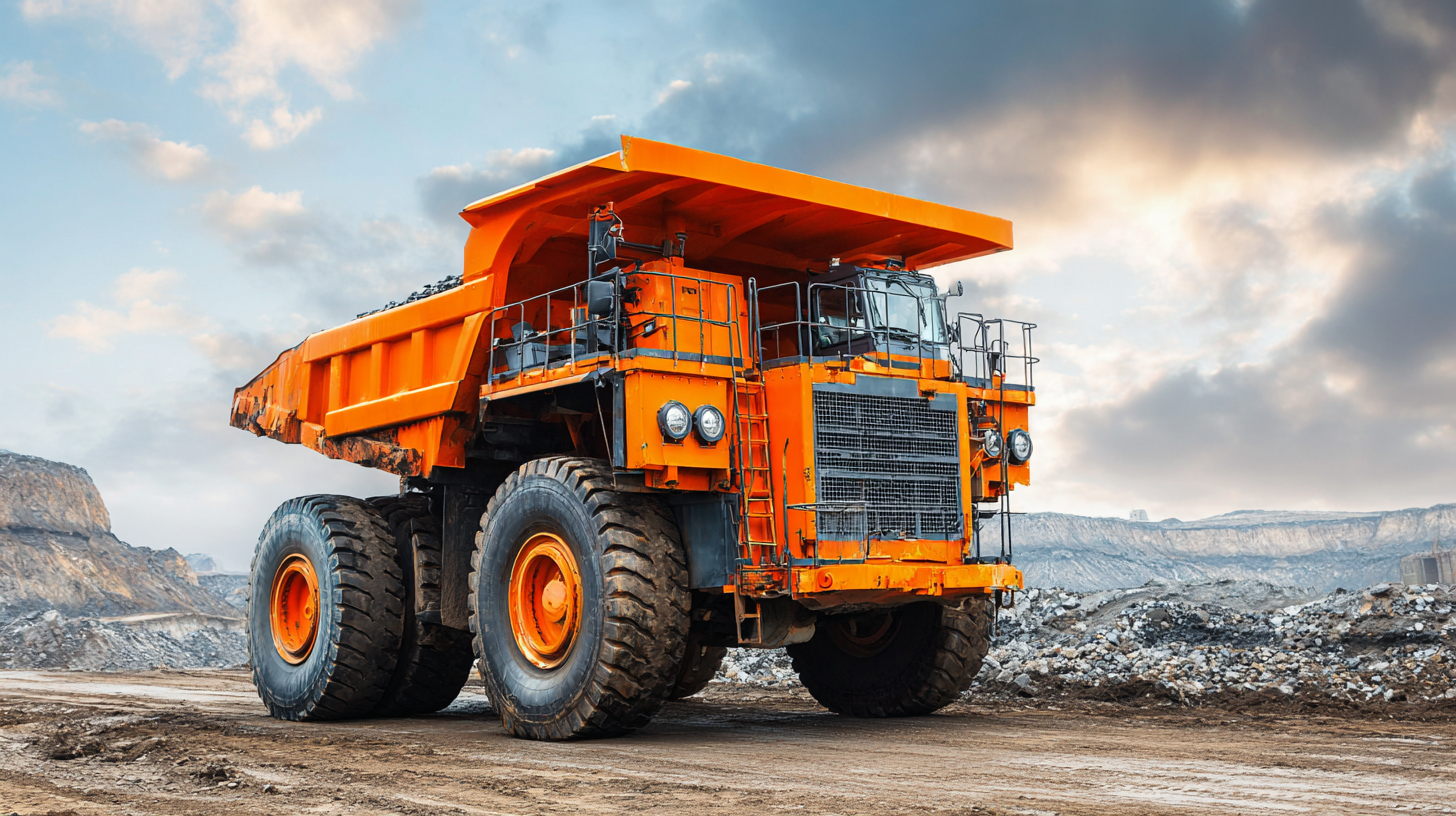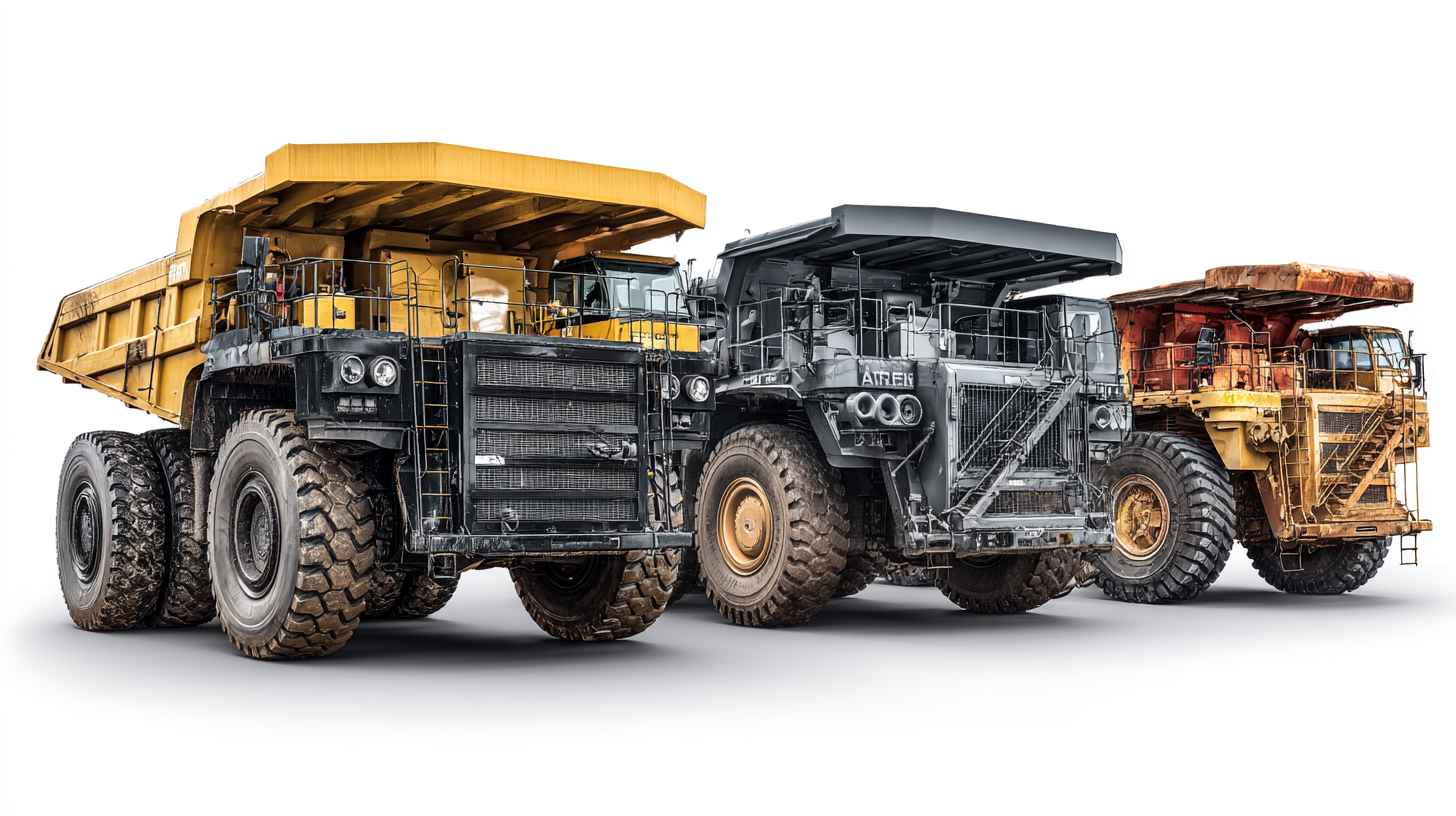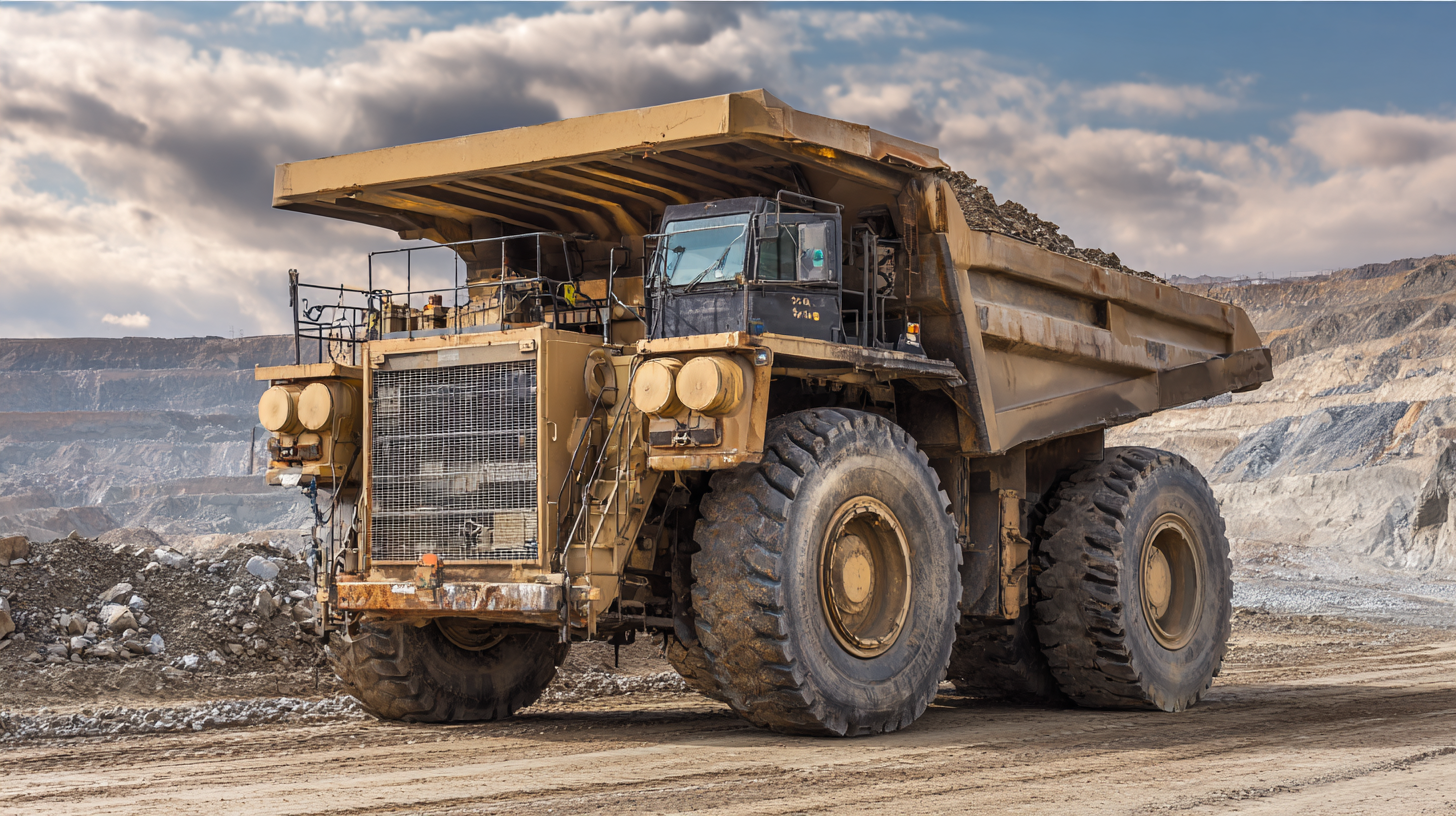In the ever-evolving landscape of the mining industry, the efficiency and effectiveness of operations largely hinge on the types of equipment used, particularly the diverse types of mining trucks. These robust vehicles have transformed how materials are transported across mining sites, enabling a smoother workflow and enhancing overall productivity. From large haul trucks designed for heavy loads to smaller models adept at navigating tight spaces, the innovation in mining truck designs is unmatched. The emergence of these advanced vehicles not only boosts operational efficiency but also minimizes environmental impact, highlighting the industry's commitment to sustainability.

This blog will explore the ten best types of mining trucks that are revolutionizing the industry, showcasing their unique features and the strategies that underline their operational superiority. Whether you're a seasoned professional or new to the mining sector, understanding these types of mining trucks is essential for optimizing your operations and staying ahead in a competitive market.
Electric mining trucks have emerged as game-changers in the mining industry, significantly impacting the sector's carbon footprint. According to a report by the International Council on Mining and Metals, the mining sector is responsible for approximately 4-7% of global greenhouse gas emissions. Transitioning from diesel-powered vehicles to electric alternatives can substantially reduce these emissions, as electric trucks are known to emit zero tailpipe emissions. This shift not only helps in meeting stringent environmental regulations but also aligns with broader sustainability goals. For instance, companies like Caterpillar and Komatsu are already pioneering electric solutions, with Caterpillar projecting a reduction of up to 80% in emissions when operations utilize electric machinery.
Moreover, the cost-effectiveness of electric mining trucks further incentivizes their adoption. A study from McKinsey & Company highlights that electric trucks can reduce operating costs by nearly 20% due to lower fuel expenses and maintenance costs. Additionally, the reduced noise level associated with electric vehicles improves the working conditions for operators and minimizes noise pollution in nearby communities. As mining companies strive to enhance efficiency while adhering to environmental standards, electric mining trucks represent a promising avenue toward a more sustainable future in mining operations.

Dump trucks play a critical role in the mining industry, where maximizing payload capacity is essential for operational efficiency. The design of modern dump trucks incorporates advanced engineering principles to enhance load-bearing capabilities while maintaining stability on rough terrains. Key innovations include reinforced frames and optimized body shapes that facilitate better weight distribution, allowing these trucks to carry heavier loads without compromising safety.
The science behind dump truck design also involves the use of lightweight materials, such as high-strength steel and aluminum alloys. These materials reduce the overall weight of the truck, enabling an increased payload without exceeding weight restrictions. Additionally, engineers employ sophisticated hydraulic systems that improve the speed and reliability of the tipping mechanism, ensuring that materials can be unloaded swiftly, thus minimizing downtime in mining operations. By integrating these design elements, manufacturers continue to revolutionize dump trucks, making them more efficient and effective for the demanding conditions of the mining industry.
The integration of autonomous trucks into mining operations is revolutionizing the industry by significantly enhancing operational efficiency. These trucks, equipped with advanced AI-driven technologies, can operate without human intervention, reducing labor costs and minimizing the risk of accidents. As companies invest more in automation, they are finding that these vehicles not only optimize resource allocation but also ensure consistent productivity, allowing for seamless transportation in rugged terrains and challenging conditions.
Additionally, the transition to autonomous systems is supported by a growing demand for modernization in various sectors, including mining. The latest trends show that businesses around the world are beginning to recognize the potential of AI and autonomous vehicles to transform their operational frameworks. However, challenges remain in fully integrating these technologies into existing systems. As stakeholders adapt and embrace these innovations, the mining industry is poised to set new standards for efficiency and safety, ultimately reshaping the landscape of resource extraction.
| Truck Type | Load Capacity (tons) | Autonomous Capability | Fuel Efficiency (mpg) | Operational Cost ($/hour) |
|---|---|---|---|---|
| Articulated Dump Truck | 30 | Yes | 8 | 150 |
| Rigid Dump Truck | 50 | Yes | 6 | 200 |
| Electric Dump Truck | 40 | Yes | 10 | 180 |
| Hybrid Dump Truck | 35 | Yes | 9 | 170 |
| Off-Highway Dump Truck | 60 | No | 7 | 220 |
| High-Payload Dump Truck | 70 | No | 5 | 250 |
| Trolley Assist Truck | 80 | No | 9 | 230 |
| Subsurface Mine Truck | 20 | Yes | 11 | 140 |
| Underground Haul Truck | 15 | Yes | 12 | 160 |
| Large Capacity Dump Truck | 90 | No | 4 | 280 |
Modern mining trucks have undergone significant transformations, particularly with a focus on safety innovations that address the industry's inherent risks. According to the International Council on Mining and Metals (ICMM), mining remains one of the most dangerous professions, with an average fatality rate of 0.1 per 1,000 workers. This statistic underscores the necessity for improved safety measures in mining vehicles, where advancements have proven critical in reducing accidents and enhancing operational safety.

Recent reports from the Mining Safety and Health Administration (MSHA) indicate that the integration of advanced technologies, such as collision avoidance systems and automated controls, has led to a 30% reduction in accidents related to heavy equipment. The latest models of mining trucks are now equipped with intelligent systems that not only monitor the surrounding environment but also provide real-time feedback to operators. Furthermore, ergonomic designs within cab structures help reduce operator fatigue, which is a significant contributor to on-site accidents. Overall, the trend towards safety-first innovations in mining trucks is shaping a more secure working environment while simultaneously driving productivity in the mining sector.
In the mining industry, the advent of hybrid trucks has prompted a significant shift in operational efficiency and cost management. A cost-benefit analysis reveals that while the initial investment in hybrid technology may be higher, the long-term savings on fuel consumption and reduced maintenance costs are substantial. Hybrid trucks, which combine traditional internal combustion engines with electric power, enable operators to make the most of their investment over time, offering efficiency improvements that can lead to lower overall operational costs.
When considering the adoption of hybrid trucks, mining companies should evaluate their specific needs and the typical terrains of their operations. Tips for optimizing returns from hybrid trucks include conducting an in-depth usage analysis and calculating projected fuel savings based on existing fleet performance. Furthermore, maintaining a robust training program for operators can enhance the benefits of hybrid technology, ensuring the team is well-equipped to maximize efficiency.
Another crucial tip is to leverage data analytics to monitor truck performance and fuel efficiency continually. By analyzing this data, companies can identify patterns, predict maintenance needs, and implement strategic changes that can further drive down costs. This predictive approach can extend the lifespan of mining trucks and optimize resource allocation, significantly enhancing the bottom line.